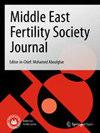Circular RNA regulates male spermatogenesis: a narrative review
IF 1.3
Q4 REPRODUCTIVE BIOLOGY
引用次数: 0
Abstract
Spermatogenesis was crucial for adult male animals to achieve reproductive function, and this complex physiological process required timely and moderate expression of related genes. A large number of epigenetic regulatory factors were involved, including cyclic RNA. Circular RNA had various characteristics such as rich expression, evolutionary conservation, cell or tissue specificity, and higher resistance to exonuclease or ribonuclease degradation. It can regulate the expression of parental genes and function as mRNA traps, miRNAs, or proteins in the corpus cavernous; it can also participate in the process of spermatogenesis through RNA-binding proteins, including the formation of reproductive stem cells, sperm formation, seminal plasma composition, and testicular tissue formation.环状核糖核酸调控男性精子发生:综述
精子发生是成年雄性动物实现生殖功能的关键,而这一复杂的生理过程需要相关基因的及时和适度表达。其中涉及大量表观遗传调控因子,包括环状 RNA。环状 RNA 具有表达丰富、进化保守、细胞或组织特异性强、抗外切酶或核糖核酸酶降解能力强等特点。它可以调控亲代基因的表达,在海绵体中发挥mRNA捕获器、miRNA或蛋白质的功能;还可以通过RNA结合蛋白参与精子发生过程,包括生殖干细胞的形成、精子的形成、精浆成分和睾丸组织的形成等。
本文章由计算机程序翻译,如有差异,请以英文原文为准。
求助全文
约1分钟内获得全文
求助全文
来源期刊

Middle East Fertility Society Journal
REPRODUCTIVE BIOLOGY-
CiteScore
2.80
自引率
0.00%
发文量
32
审稿时长
45 weeks
 求助内容:
求助内容: 应助结果提醒方式:
应助结果提醒方式:


